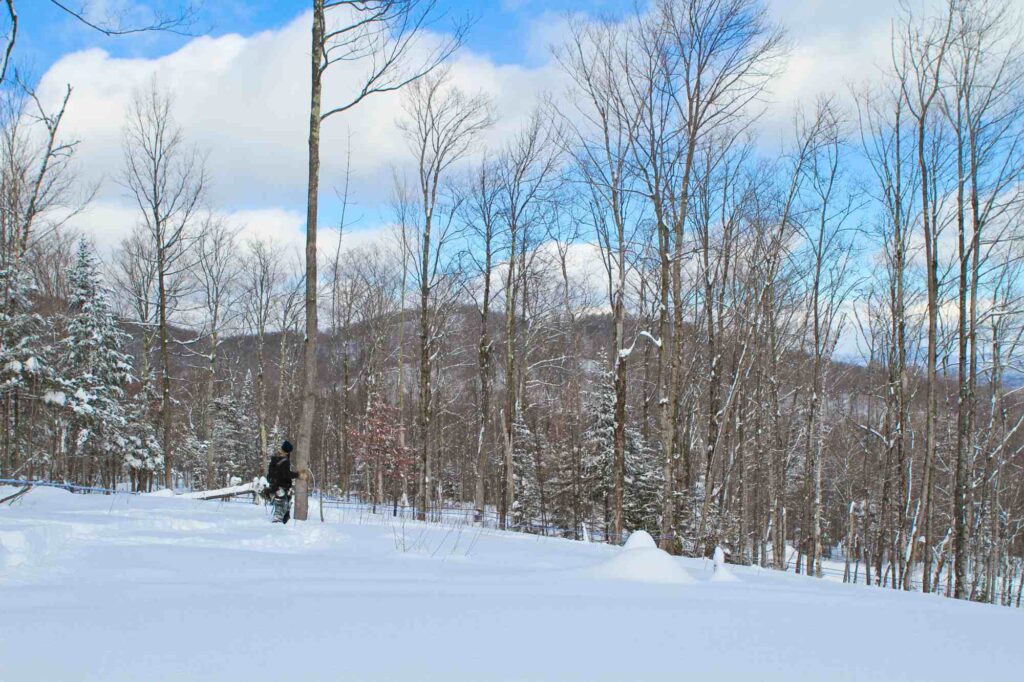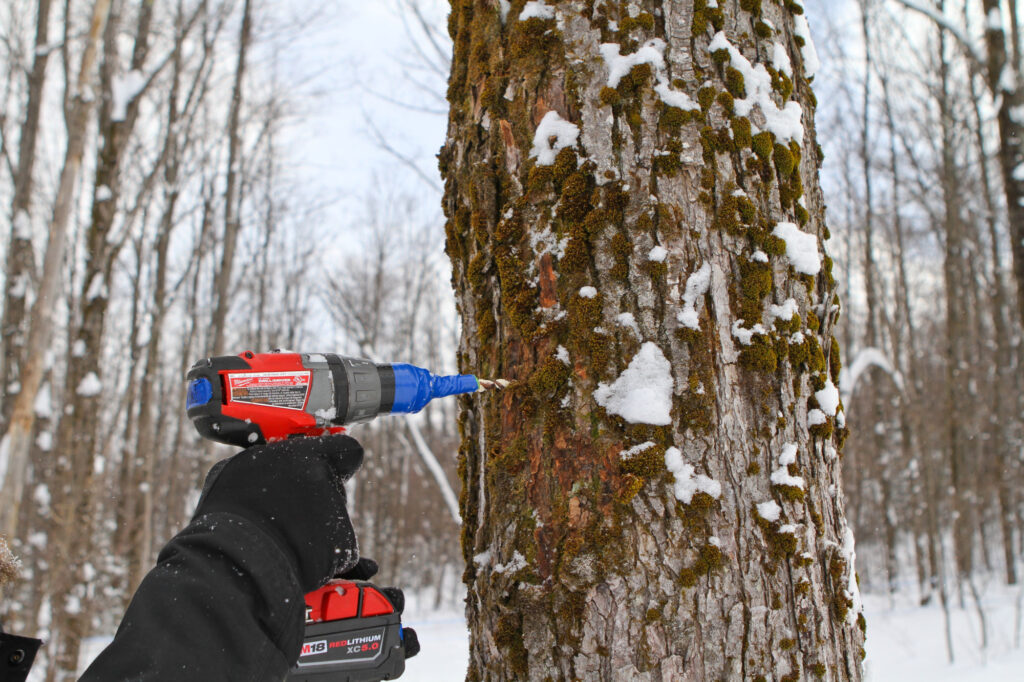Here in maple country, we take for granted that everyone knows how maple syrup is made. Most Vermont kids will visit a sugarhouse at least once in their elementary school years and given the small state, most people know someone connected to the industry. This is why we might stand there with blank stares if an innocent out-of-stater asks if you can make maple syrup year-round (no), or if we add sugar to it (big no). We just presume some common knowledge on the topic like knowing about corn crops if you grew up in Iowa, or \college football if you herald from the south. Even if you are not a corn farmer or football fan, the culture is all around you and you can’t help but absorb some information. Same here with sugaring.
With that in mind, we are going to make all of you honorary Vermonters by breaking down the process of how maple syrup is made. We promise not to bog you down in technicalities unless there are very cool statistics to share. And we are going to do our best to show you what we are talking about with photos as we proceed through the 2021 season. We will start with tapping the trees which just started here the last week in January.
Tapping
Every year the trees are newly tapped for the season. Previous to the 1980s, sugarmakers would drill a hole in the tree, hammer in a spout and hang a bucket on it. Then they would wait for the sap to run and people with either horses or 4-wheelers would collect the sap in a container, on a sled and bring it to the sugarhouse. While very picturesque, this method was only practical if you had a few hundred trees to tap.
Many sugarbushes are much bigger these days and all but a few use a network of tubing that starts directly from the tap in the tree and drains to a collection point. Our sugarbush in Cambridge consists of a contiguous section of the area on Mt. Mansfield known as Thunder Basin and all 1,000 acres of sap coming out of the trees drains directly into the sugarhouse. Over 600 miles of tubing was set up to reach all of the maples over those acres and the terrain varies from sloping knoll to near-vertical embankments. Suffice it to say, there was a lot of hill climbing to install it. Setting up the tubing in a sugarbush can take months and is usually done in the off season. Once it is up, it will stay in place for many years until it needs replacing.
Since we have roughly 70,000 spouts to put in, we usually start in mid-January. Our crew consists of about 12 people who set out every day, save for the very coldest, and work their way from the bottom of the mountain up. When you go out tapping, you put on a base layer for pants and top, additional mid-layer shirt, snow pants, good socks, high boots, coat, hat, gloves and neck gaiter. In addition to those are the drill, hammer, spouts, extra gloves and water. When installing taps, you are also trouble shooting issues with the lines so your work vest is full of 20 pounds of tools. Now you are ready to walk uphill through two feet of snow.
Tapping the tree is straightforward but there are ways to maximize yield and keep the health of the tree. One question we get asked often is if it harms the tree and the answer is no, if you know what you are doing. There are some sugarbushes that have been in production for over a hundred years with strong trees producing every year. A tapper knows which trees to tap because the tubing system runs past them and there is a drop line in front, which is there to connect to the spout. Only trees 8” or bigger should be tapped and if the tree is so big you can’t put both arms around it, you can put in two (no cheating by using toddlers to measure). You can actually get sap from many types of trees such as birches but we only tap red (Acer rubrum) and sugar maples (Acer saccharum).
To put in a spout, first find a place on the tree that is far from tap holes of past years. The tree has healed itself from the hole but the sapwood around it will not yield well. You drill your hole, hammer in your spout and attach the tubing snugly from the drop line. Voila; one down, 69,999 to go.
Speak like a local
Sugaring: (v) the act of producing maple syrup. Ex. “You sugarin’ this year?” (Only drop the ‘g’ if you are fifth generation Vermonter or older, otherwise you will look like a poser.)
Sugarhouse: (n) the building in which sap is boiled to maple syrup. Google spell check has yet to weigh in if it is one word or two, much less acknowledge it exists but it is our term so we declare it one.
Sugarbush: (n) a forest grove that is dense in sugar maples where trees are tapped for maple syrup. Also, a pretty nifty little ski resort in the Mad River Valley.
Sugarmaker: (n) One who produces maple syrup. Go ahead a picture a middle-aged guy with a plaid, flannel shirt and you’d be right 80% of the time, but there are more women and young people entering the business. You can picture them wearing plaid, flannel shirts too.
Sugar-free maple syrup: that would be an empty bottle.
Spout: (n) the little gizmo that you put in the tap hole where the sap will run out. A.k.a. Spile. Technically, tapping is the act of drilling the hole but when fellow sugarmakers ask about the size of your sugarbush it is always in units of taps, ex. “You hear Sorkin is doing another 6,000 taps? That guy is &^%$*ing crazy.”
Sap: (n) the liquid that comes out of the tree which consists of 1-2% sugar, minerals and water. Perhaps the biggest misconception from outsiders is that maple syrup comes out of the trees. Sugar maples produce sap which has to be boiled down to maple syrup. If they produced straight maple syrup, we’d all be making a bit more money.


